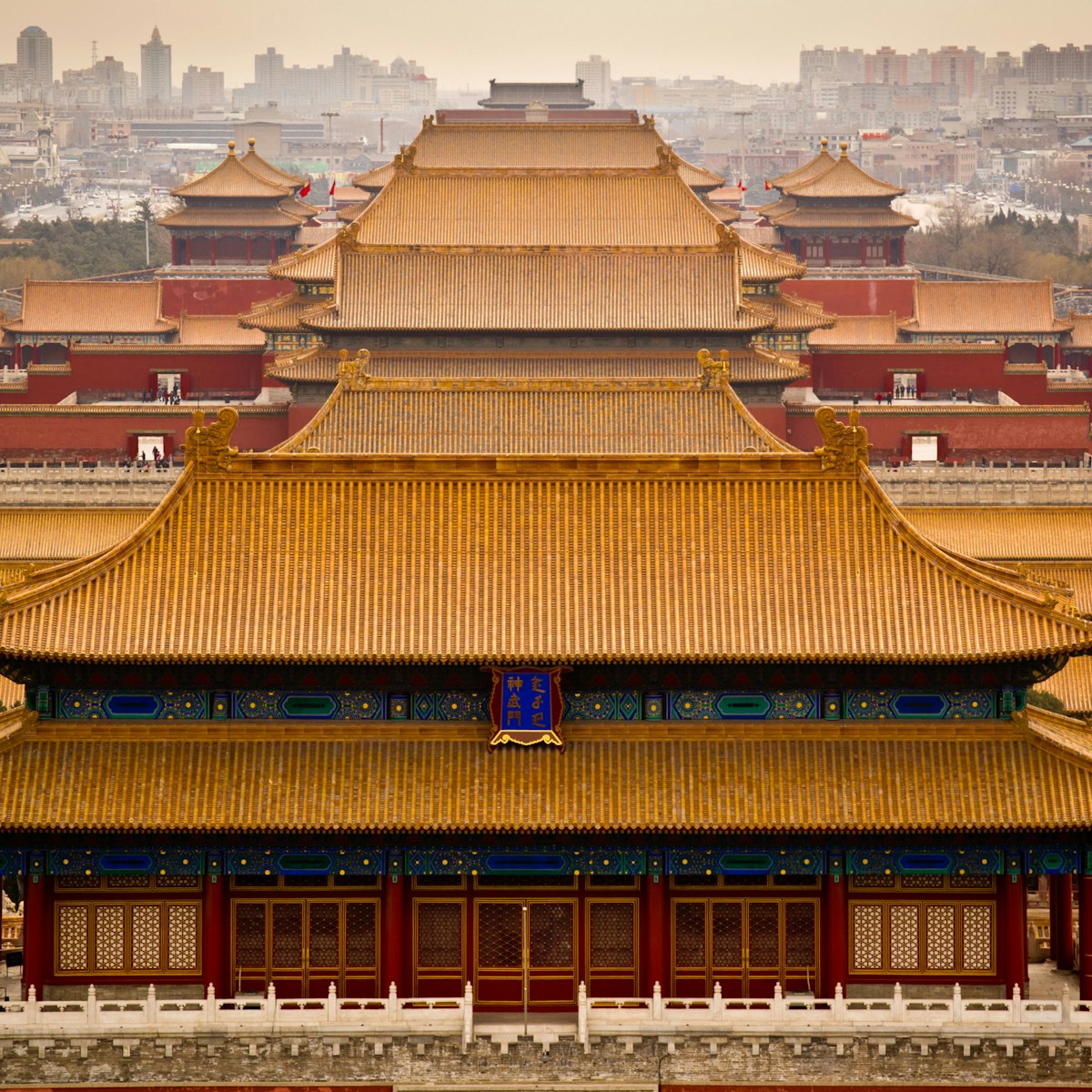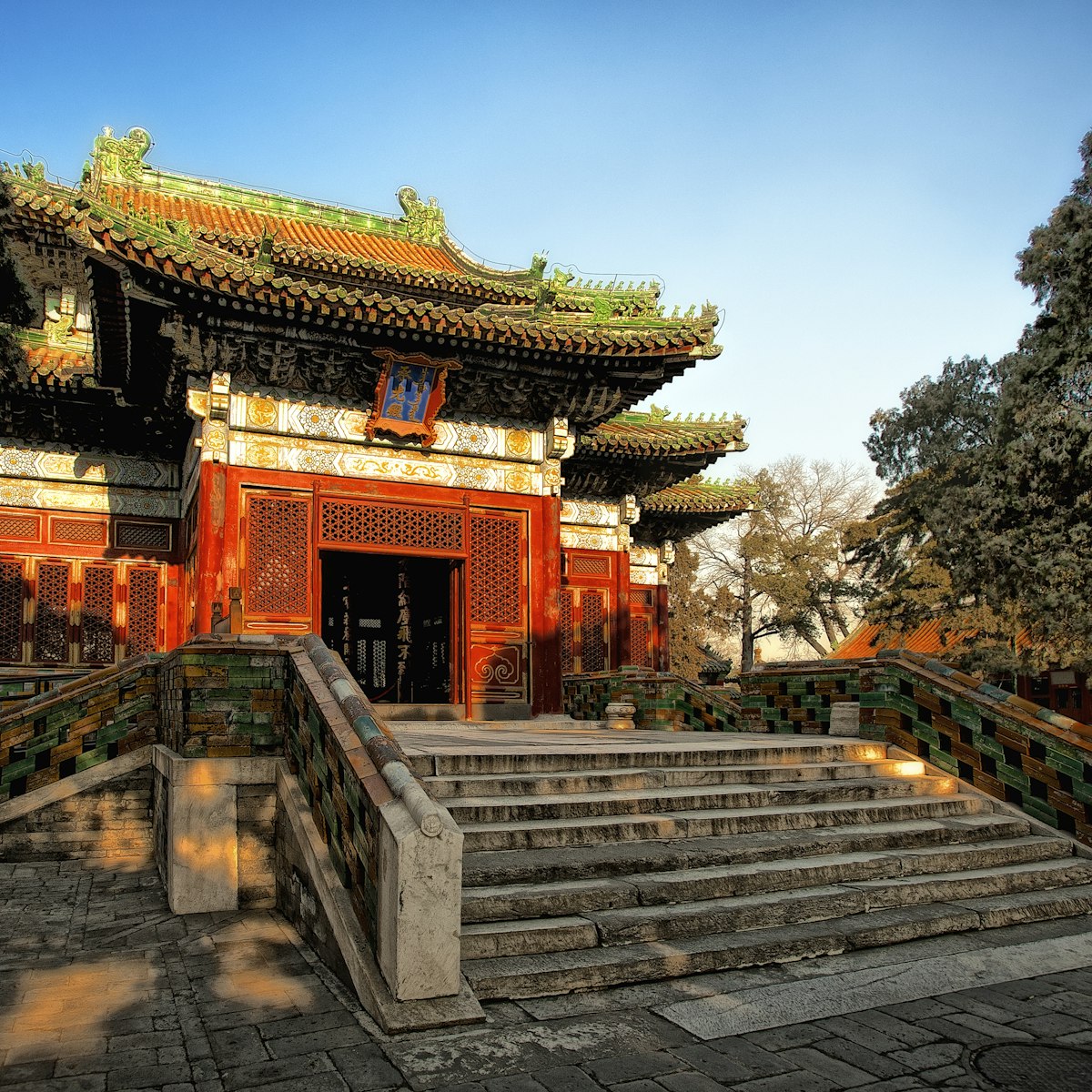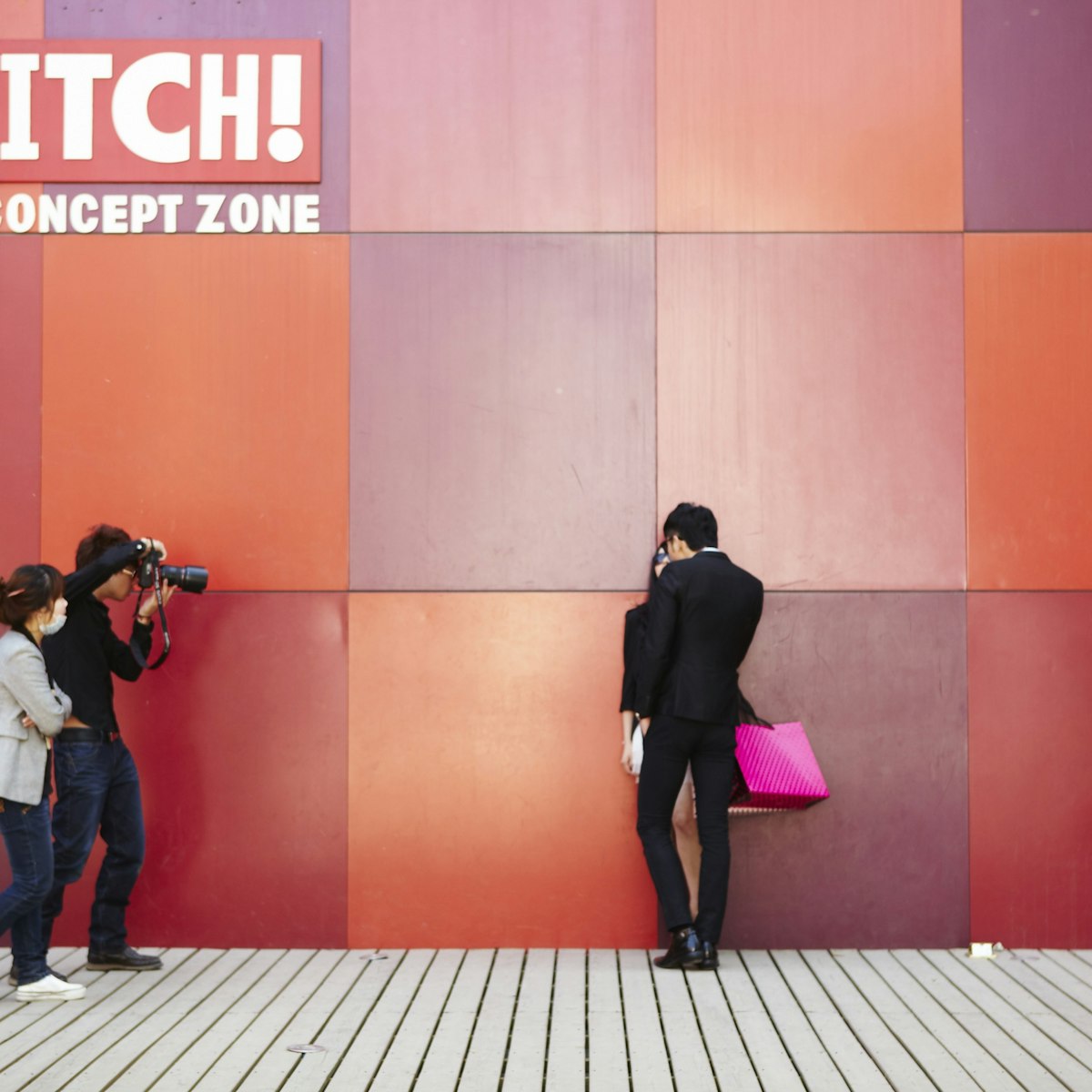This three-storey wooden opera house, built in 1776, was the Forbidden City’s largest theatre. Note the trap doors that allowed actors to make dramatic stage entrances. Within the same courtyard is the Hall for Viewing Opera, where the emperor and empress would enjoy the show; today it displays a fascinating collection of royal opera artefacts and costumes.
Belvedere of Cheerful Melodies
Lonely Planet's must-see attractions

0.22 MILES
Enclosed by 3.5km of citadel walls at the very heart of Beijing, the Unesco-listed Forbidden City is China’s largest and best-preserved collection of…

2.85 MILES
An oasis of methodical Confucian design, the 267-hectare Temple of Heaven Park is unique. It originally served as a vast stage for solemn rites performed…

8.61 MILES
A marvel of Chinese garden design and one of Beijing's must-see attractions, the Summer Palace was the royal retreat for emperors fleeing the suffocating…

1.17 MILES
Flanked by triumphalist Soviet-style buildings, Tian'anmen Sq is an immense void of paved stone (440,000 sq metres, to be precise) at the symbolic centre…

0.83 MILES
Beihai Park, inside the old Imperial City, looks much as it would have done in the 18th century when it served as Emperor Qianlong's private gardens. The…

2.27 MILES
This immense fortress, part of the Ming City Wall Ruins Park, guarded the southeast corner of Beijing's city walls. Originally built in 1439 but repaired…

0.84 MILES
Instantly recognisable by its giant framed portrait of Mao, and guarded by two pairs of Ming dynasty stone lions, the double-eaved Gate of Heavenly Peace …

6.46 MILES
Contemporary art meets communist history at this thrilling enclave of international galleries installed within China's model factory complex of the 1950s…
Nearby attractions
1. Hall of Spiritual Cultivation
0.03 MILES
Built in 1776, the Hall of Spiritual Cultivation was intended to be used for Qing emperor Qianlong's retirement. He never moved in, although he did throw…
0.06 MILES
The main hall of the Palace of Tranquil Longevity (宁寿宫, Níng Shǒu Gōng) built around 1771 for Qing emperor Qianlong's retirement, though he never moved in…
0.09 MILES
In the northeastern corner of the complex is the Treasure Gallery (or Complete Palace of Peace and Longevity, 宁寿全宫, Níng Shǒu Quán Gōng), a…
0.1 MILES
In the northern boundary of the Treasure Garden is the site where Zhen (the Pearl Concubine), favourite consort of Emperor Guangxu, was said to have been…
0.12 MILES
Built in 1420, this palace has been the residence of numerous empresses, imperial concubines and consorts. It's one of the six eastern palaces in the…
0.12 MILES
The hall where emperors worshipped their ancestors (under restoration at time of research). Once held the spirit tablets of deceased Qing emperors.
7. Palace of Prolonging Happiness
0.12 MILES
The most unique of the Forbidden City's six eastern palaces, the Palace of Prolonging Happiness features an unfinished 20th-century Western-style building…
0.12 MILES
The northeasternmost of the six eastern palaces of the Forbidden City, it started out as a residence for concubines, and later became a library.